The stories behind the Rijksmuseum designs by Creative Lab Amsterdam

The three designs in our Rijksmuseum collection were created using works by exceptional Masters of Art, from 1500-1800. They come in four wallpaper formats: murals (standard sized), wallpaper circles, bathroom wallpaper and customised wallpaper. The designs are also featured in our Rijksmuseum stationery collection greeting cards and notebooks.
The masters, whose works are incorporated into the designs, each have their own story that must continue to be told. In this article, we have highlighted the several masters found in each of the three designs with a reference to the element we have utilized. In this way, we hope to continue telling their stories.
Design: A New Chapter
A fabulous and imaginative design with finely drawn floral and animal figures, taken from from the drawings and paintings of Dorothea Maria Gsell, Jean Bernard and Robert Jacob Gordon. These artists had a fascination for flora and fauna, captured in their unique style of drawings and paintings. Now, their stories from the past come together in a contemporary design, and the works are once again given a place in the spotlight.
The Red Ibis (RP-T-1977-16) by Dorothea Maria Gsell:
Dorothea Maria Gsell (1678-1743) was the youngest daughter of botanical artist and scientist Maria Sibylla Merian. Together with her mother and sister, she maintained a very successful workshop in Amsterdam, where they sold her mother's books as well as individual drawings, stuffed animals, and dried insects
In 1699, Dorothea Maria left with her mother for Suriname to study butterflies, insects, and plants in preparation for a publication. In those days, this was a unique and dangerous journey for women. They settled in Paramaribo and regularly made trips to catch insects. Unfortunately, Maria Sibylla fell ill, forcing the women to return to Amsterdam just two years later, in 1701. After her mother's death, Dorothea Maria moved to Saint Petersburg with her husband, the Russian artist Georg Gsell. She became a renowned artist there and was closely associated with the art academy in Saint Petersburg, which was an exceptional role for a woman in this period. Her Red Ibis With One Eye was drawn in Suriname and is central to both our Never-Ending Story and New Chapter wallpapers and as well as greeting cards.
Zebra (RP-T-1914-17-191) by Robert Jacob Gordon
Robert Jacob Gordon (1743-1795), born in Holland to a Scottish father, led an adventurous life until he was drafted into the army. He was an explorer, scientist, and diplomat who travelled the Cape Colony in Southern Africa, who mapped the great river in the north of the Cape Colony, naming it the Orange River.
Robert J. Gordon left behind a legacy and provided a detailed picture of South Africa during the last decades of the VOC regime. His impressive work was created without professional help, and he was able to showcase information which would usually be collected by experts such as botanists, zoologists, ethnographers, linguists, geologists, cartographers, and draftsmen. As an anthropologist, he had a great fascination for the fate of the indigenous people with the arrival of the colonists.
We have included the main element from his drawing, Zebra on the A New Chapter wallpaper and wallpaper circle.
Pink Tulip (RP-T-1904-412) by Jean Bernard
Jean Bernard (1765-1833) was an amateur artist, art dealer and member of the Amsterdam private drawing society 'Zonder Wet of Spreuk' (ca. 1808-1819). This society consisted of a group of 14 befriended artists who met to draw a hired (dressed) model. Several drawings of the same model have been found in the estates of these artists. The Rijksmuseum acquired a large collection of his drawings in 1904. Most of Jean Bernards’ work consisted of drawings of animals and still life. We have incorporated the details of the Pink Tulip into the A New Chapter Wallpaper and wallpaper circles, adding an element of bright color to the busy design.
 |
 |
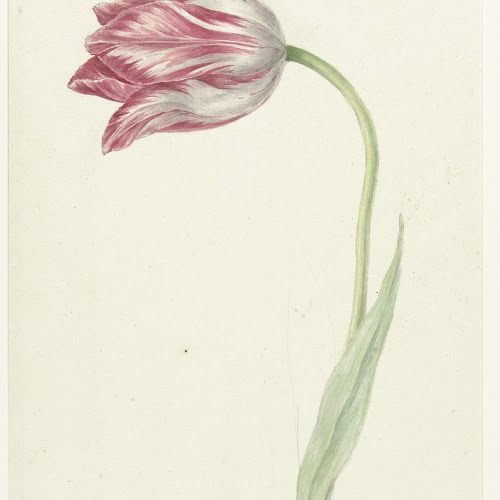 |
Design: Once Upon a Time
An exceptionally colorful and cheerful combination in which the artworks of Aert Schouman and Henrietta Geertrui Knip play the leading role. The flora with its exuberant flowers and the fauna with its refined toucan and red parrot create a particularly strong combination. The painters, who lived in different centuries, shared the same passion: visualizing extraordinary animals and colorful flowers with refined details. They are united in a new design and are presented in a new light in the 21st century in our Once Upon a Time design.
Red-billed Toucan RP-T-FM-138 & Red-green parrot RP-T-1918-432 by Aert Schouman (1720).
Aert Schouman (1710-1792) was an artist from Dordrecht and a jack-of-all-trades. He painted, drew, created prints, and engraved glassware. He was also a collector and art dealer and even made quite a few murals (with the purpose of decorating the walls) for prominent citizens of Dordrecht, The Hague and Middelburg. He painted these murals in a light and vibrant style.
Aert Schouman was not a scientist, but he was equally interested in the natural and accurate representation of the animal and bird kingdom. His great powers of observation are evident in the way he presents the different species, for example his Red-billed Toucan clings to a branch, using two toes instead of three as other species do.
The toucan and parrot have been utilized on the Once Upon A Time design which can be found in made-to-measure wallpaper, wallpaper circle, and greeting cards.
Bouquet (RP-T-FM-72) by Henriëtta Geertruij Knip.
Henriëtta Geertruij Knip (1783-1842) came from a family of artists in Brabant, spanning three generations, from about 1770 to 1900. It is remarkable for a woman of that age to have made a meritorious career as a painter. She was first apprenticed to her father, Nicolaas Frederik Knip and later moved to Paris in 1803, where she was apprenticed to Gerard van Spaendonck. Like Van Spaendonck, she specialized in fruit and flower still life art. Knip moved back to the Netherlands in 1806. Not many of her works have survived; the Teylers Museum in Haarlem and the Rijksmuseum each have only two. We have taken aspects of her drawings to create the energetic main element of the Once Upon a Time wallpaper design.
 |
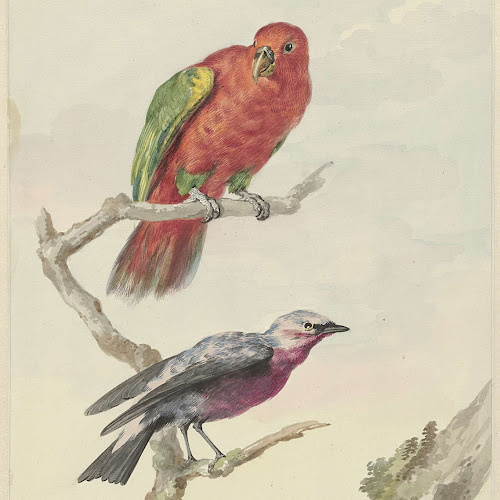 |
 |
Design: Never Ending Story
The lavish floral wreath is the centerpiece of the design Never Ending Story. You won’t be able to take your eyes off it and each time you analyze you will discover new details. The Never Ending Story design takes you on a journey in time between the 16th and 19th centuries. Each of these artists had their own vision of the world and captured the flora and fauna in their own unique way.
Asian Elephant (RP-T-BR-2017-1-2-9) and Long-eared Owl (RP-T-BR-2017-1-3-32) by Anselmus de Boodt
Anselmus de Boodt (1550-1632) was the personal physician of Rudolf II (1552-1612), emperor of the Holy Roman Empire, as well as an artist, lawyer and naturalist. Rudolf II commissioned him to make an overview of the plant and animal kingdoms. This resulted in the Historia Naturalis, a book in three volumes with 750 watercolor drawings of flowers, animals and birds. After the death of Rudolf II, De Boodt took the unpaid drawings with him to his native city of Bruges. In his will, he stipulated that the three parts must pass intact to male heirs. When the last heir died in 1844, the albums were sold for the first time. They only changed hands once, before they were bought in March 2017 by a private collector, who generously loaned them to the Rijksmuseum.
Album sheet with ostrich RP-T-1952-370 Anonymous (1550 – 1570)
Giraffe RP-T-1914-17-150 by Robert Jacob Gordon (1779)
Flower Wreath (RP-T-1955-268), Anonymous (1688-1698)
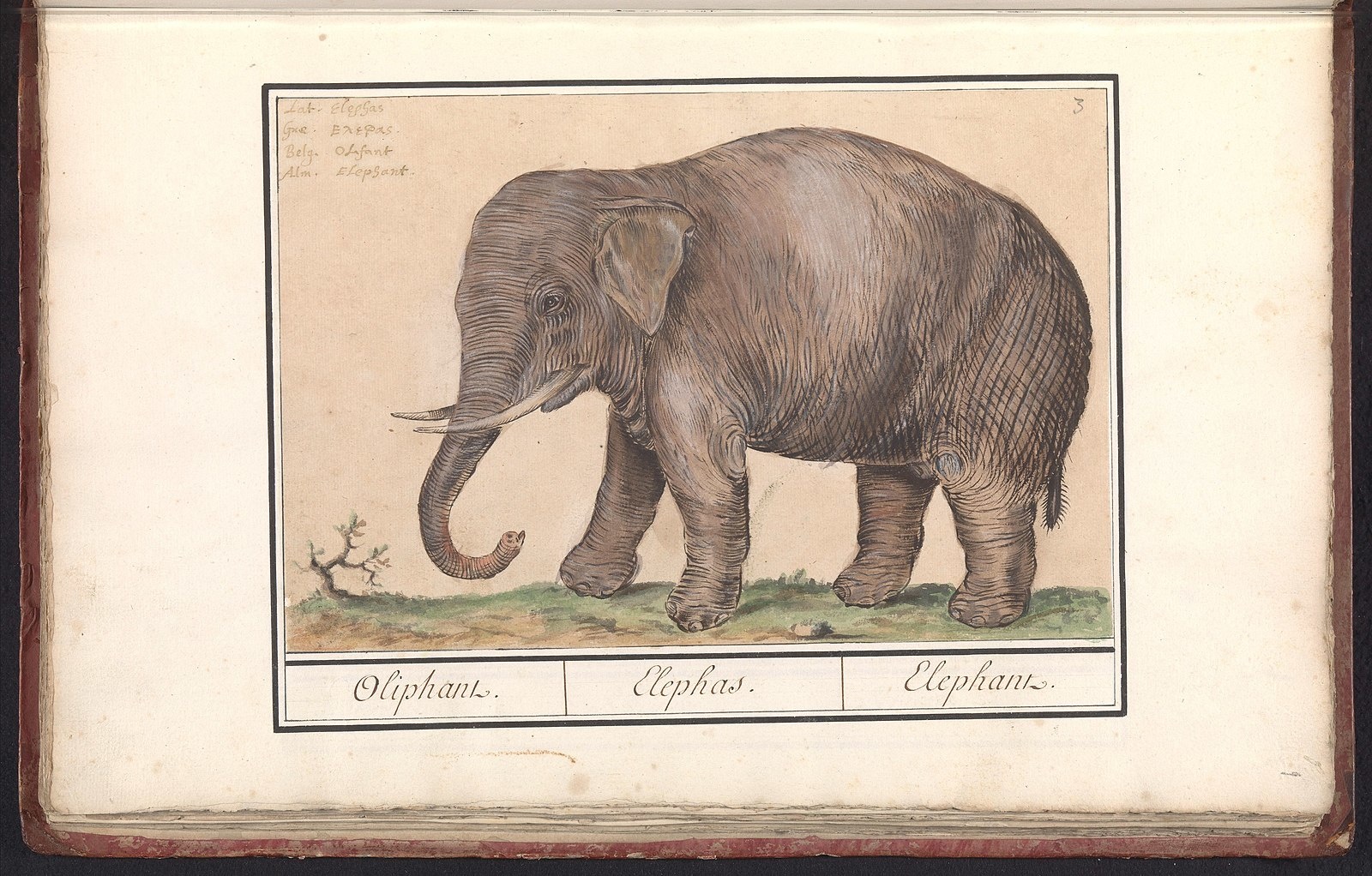 |
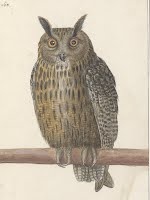 |
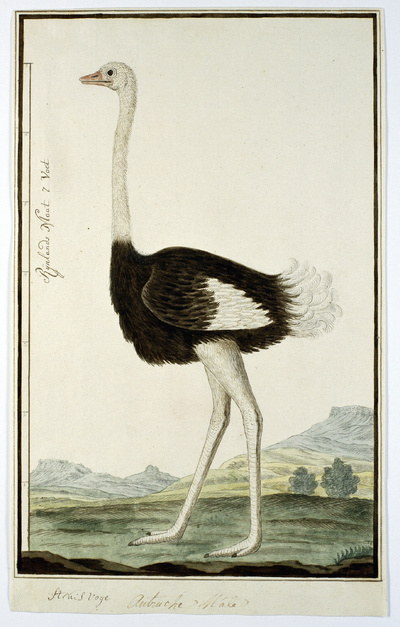 |
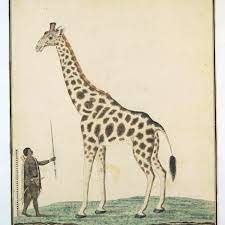 |
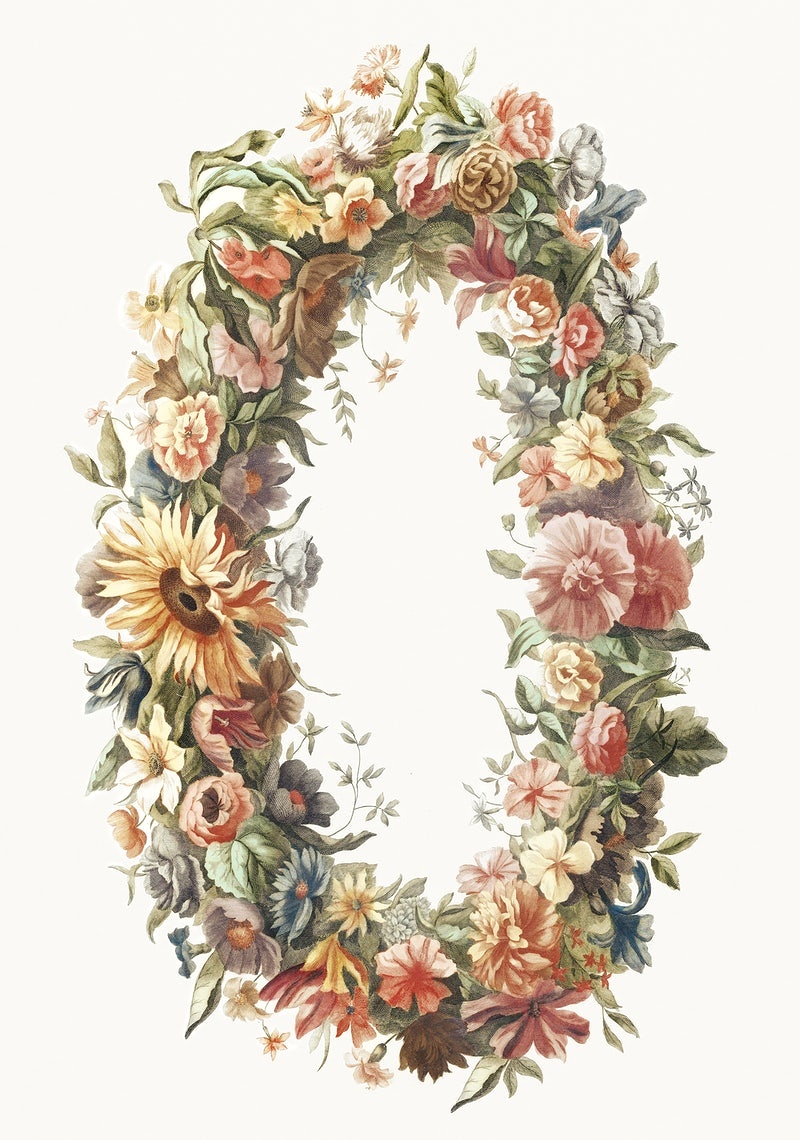 |
All discussed parts have been given their place on the wallpaper within a frame of the Flower Wreaths which showcase the individual artworks. The wallpaper can be found in the standard sizes (murals), custom wallpaper, bathroom wallpaper and wallpaper circles. They appear scattered on the greeting cards and notepads.
Het Parool wrote an article on the creation of the wallpaper. Read the article here.






























































